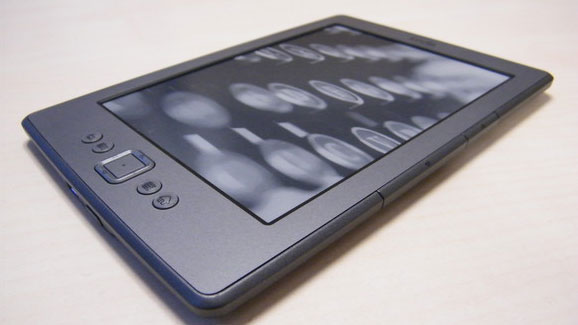Why you can trust TechRadar
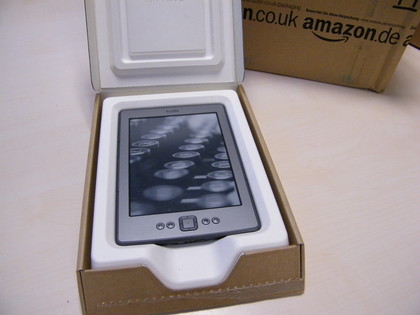
The key to any ebook reader is the screen, and the new Kindle shares the same 600 x 800, 16 greys E-Ink display as the previous generation Kindle Keyboard, and it remains marvelous.
Its matt screen surface is perfectly legible in the sort of direct sunshine that usually reduces glossy-screened LCD devices to pure glare.
However, it's not backlit, so you'll need the bedside light on at night.
Amazon claims its new Kindle's screen refreshes 10% faster than the last generation, but we couldn't see any obvious improvement.What has changed is the visual way the page changes - no longer does the page flick to all black before redrawing; now only the areas that need to change flicker and redraw, which looks much more elegant.
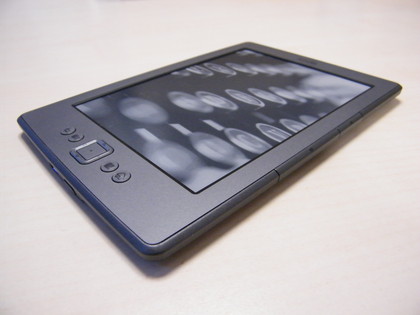
A full-page refresh happens every few pages. The lack of a full refresh degrades the text quality very slightly over time between refreshes - you can download a software update to return to the old refresh system if you find it noticeable.
The screen is the same, but the packaging is very different. The new Kindle measures just 166mm by 114mm, making it the smallest of the family and some 24mm shorter and 9mm narrower than the Kindle Keyboard, itself a slight device.
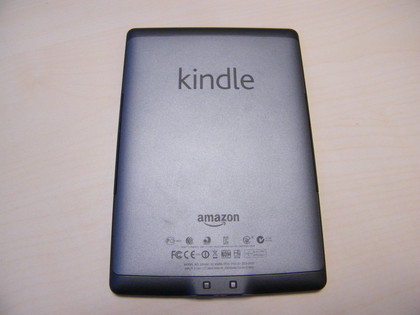
Design-wise the single grey and rounded corners are replaced with a tri-tone set of greys with much sharper corners. The plastic on the back has a slightly coated feel to aid grip, but not as rubberised as the Keyboard.
The buttons are simplified. Obviously there's no QWERTY keyboard, and just four buttons flank the central four-way-plus-select rocker. The buttons are Back, Home, Menu and a key to call up the on-screen keyboard. Forward and back ìpaddlesî sit either side of the screen, and on the base a simple power button replaces the slider seen in previous generations.
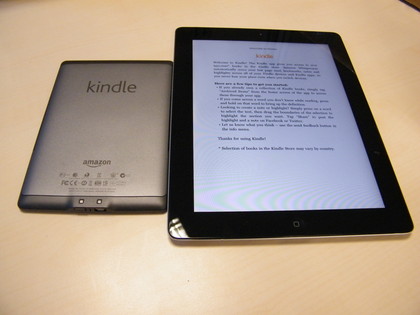
The net effect is of a reader the size of a very slim paperback volume of poetry, which sits in the palm of one hand - if you have fairly large hands. The reduction in weight to just 170g means you can hold this all day. The page turn buttons are narrower, so you need to hold the new Amazon Kindle slightly differently, but we didn't find this a problem.
One change on the back is the addition of two small metal contact pads, presumably to power accessories such as a light.
Inside the Amazon Kindle, the memory has been reduced from 4GB to 2GB, half of which is available for ebooks. That's still a huge amount of space, especially now you can keep any ebooks you're not currently reading ìin the cloudî on Amazon's servers, and just restore them in seconds. Amazon reckons you can fit 1,400 books on the device, but we didn't buy quite 1,400 books to check this.
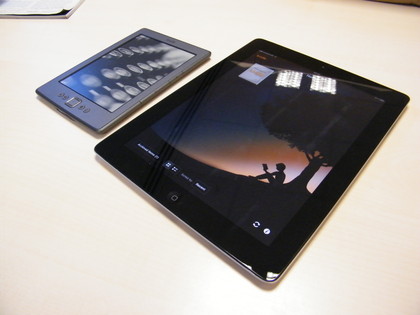
Also reduced is the battery capacity, but the device should still last a month on a single charge. No charger is included with the Amazon Kindle, just a USB cable. But because the Kindle uses a micro USB connector, you probably have half a dozen compatible chargers lying around already.
The Amazon Kindle is Wi-Fi only - if you want 3G internet connectivity you'll need to buy the £149 Kindle Keyboard, or wait for the Kindle Touch to make it to the UK. 3G is handy, but for most users we suspect Wi-Fi access will be perfectly sufficient. The Wi-Fi chip is one area that has had an upgrade, with access via 802.11n as well as a and g wireless internet.
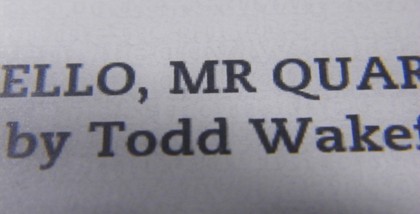
To keep costs and size down, all of the audio features on the Kindle Keyboard have been removed, so there are no speakers or headphone jacks, there's no read aloud feature and there's no MP3 player.
Most other software features of the Amazon Kindle are the same as the other members of the family, but the lack of a hard keyboard means that only the most masochistic of users will use some of them, such as adding annotations.

Similarly, the experimental web browser is still there, but while slow screen refresh and 16-greys display made it unpleasant to use on the Keyboard, with URLs taking minutes to type it's virtually unusable here. You might take the time to laboriously set up a webmail account, we suppose.
The on-screen keyboard isn't great, the lack of buttons for Shift or to change to numeric input and the tiny pad making tapping out even usernames and passwords a real effort. Fortunately, aside from searching the Kindle Store, once the device is set up you won't have much need for it.
The Amazon Kindle comes with version 4.0 of its operating system - the Kindle Keyboard runs 3.3. There are few differences, but one that the lack of a physical keyboard enables is the ability to switch languages, which could be useful for multi-lingual readers. A new set of screen savers are added, which are slightly more contemporary in feel.
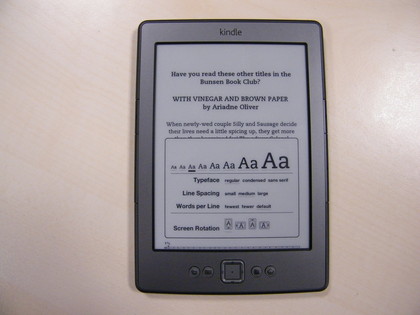
As with previous versions, you can send your own PDF and text documents to the Amazon Kindle via email or a direct USB connection. There's still no direct support for the ePub format, though, requiring another conversion stage. This is starting to look a little churlish on Amazon's part. Surely it should encourage users of ePub-based ereaders to convert?
A significant feature, not just of this device but of the whole Kindle service, is its ability to share ebooks between readers running on pretty much every technology there is - PC, Mac, iPad, iPhone, Android, BlackBerry - you can read the same books, and it remembers where you got up to on another device. This means you always have your books with you, even when the Kindle itself is at home.
